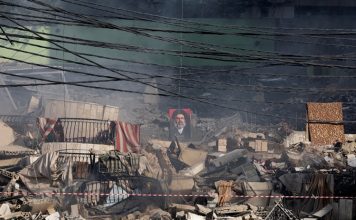By Kayhan Life Staff
The female labor force participation rate in Iran has dropped drastically in recent months, according to the Iranian Labor News Agency (ILNA), which cited a recent report by the Statistical Center of Iran (SCI).
The coronavirus pandemic has affected more women in the labor market than men. The unemployment number rose by 1.5 million in the first three months of this year. Of that figure, around 700,000 were women.
Women comprise only around 20 percent of the labor force in Iran at the best of times, which means that a vast majority of them have lost their jobs since the coronavirus outbreak, the report added.
In an interview with ILNA, Mahnaz Ghadirzadeh, a women’s rights activist, said: “The report by the SCI shows that the number of women in the labor force has dropped by 684,773 since last spring.”
“Women comprise only one-sixth [16.6 percent] of the country’s workforce. There are significantly fewer women in the labor market than men,” Ms. Ghadirzadeh explained. “There are many theories on the cause of the gender gap in employment. The job market discriminates against women. It is hard for women to find work, and even more challenging for them to remain in the labor market.”
[aesop_image img=”https://kayhanlife.com/wp-content/uploads/2020/06/2020-06-28T155803Z_819340582_RC2FIH9XJ2U8_RTRMADP_3_HEALTH-CORONAVIRUS-IRAN-scaled.jpg” panorama=”off” credit=”A woman wearing a protective face mask walks in a street, following the outbreak of the coronavirus disease (COVID-19), in Tehran, Iran. REUTERS./” alt=”A woman wearing a protective face mask walks in a street, following the outbreak of the coronavirus disease (COVID-19), in Tehran, Iran. REUTERS./” align=”center” lightbox=”off” captionsrc=”custom” captionposition=”center” revealfx=”off” overlay_revealfx=”off”]
“The SCI report blames the coronavirus pandemic for the sharp drop in the labor force participation rate,” Ghadirzadeh noted. “The fact that so many women have been affected shows that women in the labor force are the first to lose their jobs during unstable economic conditions.”
“Logic dictates that of the 1.5 million people who have lost their jobs [in the first quarter of this year], between 255,000 and 300,00 would have been women. However, the actual figure is three times that, which shows the unfair treatment of women in the labor market,” Ghadirzadeh added.
Speaking to ILNA a few months earlier, Ghadirzadeh had said: “The coronavirus lockdown has hit women day laborers the hardest. Job markets in urban centers have been affected more severely than those in rural areas. More women are looking for work in cities than in villages. The rate of unemployment is naturally higher in cities.”
“Most official statistics do not include women day laborers who live in rural regions,” Ghadirzadeh noted. “There are also many female university graduates who are looking for work. They have increased the number of female job-seekers in recent years. These women do not want to work on farms or in the handicraft industry.”
“The coronavirus pandemic threatens the livelihood of many working women,” Ghadirzadeh added. “An increasing number of women work in unsafe environments. Many of them accept jobs for less pay than the standard rates. They are being taken advantage of and exploited.”
There have been a number of reports on the pandemic’s effects on the Iranian economy and labor market.
The COVID-19 lockdown has forced many small businesses into bankruptcy and has caused massive job losses. Many of the women who have lost their jobs recently are the main breadwinner in their household.
“A large segment of the population, particularly women who are the breadwinners of their families, have been severely hit by the economic consequences of the coronavirus pandemic,” Habibollah Massoudi-Farid, the deputy director of communication for the State Welfare Organization of Iran, was quoted by the Tehran-based Pupils Association News Agency (PANA) as saying on May 31. “The high cost of goods has also made life harder for these families who desperately need our help.”
Meanwhile, many women who have been working from home or have online businesses cannot get emergency loans as part of the government plan to rescue businesses and people affected by the coronavirus.
Many women who are the sole breadwinners of their families are day laborers with no workplace insurance and benefits. They are the first to be laid off during an economic downturn.
This article was translated and adapted from Persian by Fardine Hamidi.







